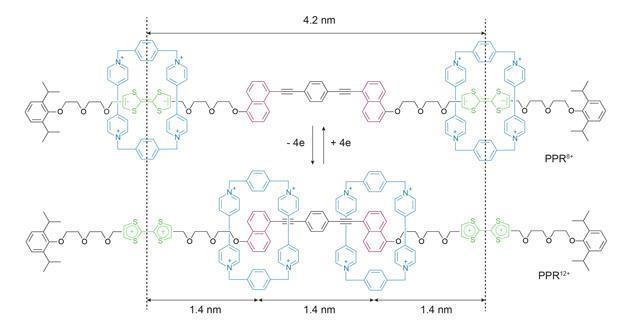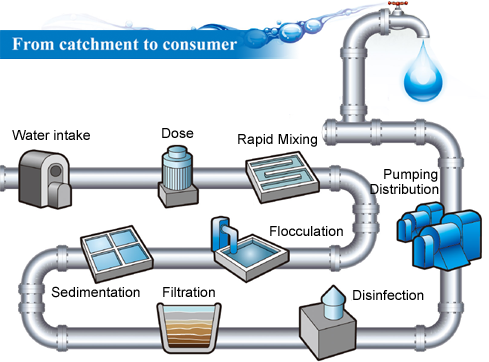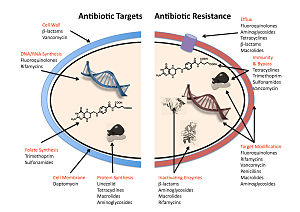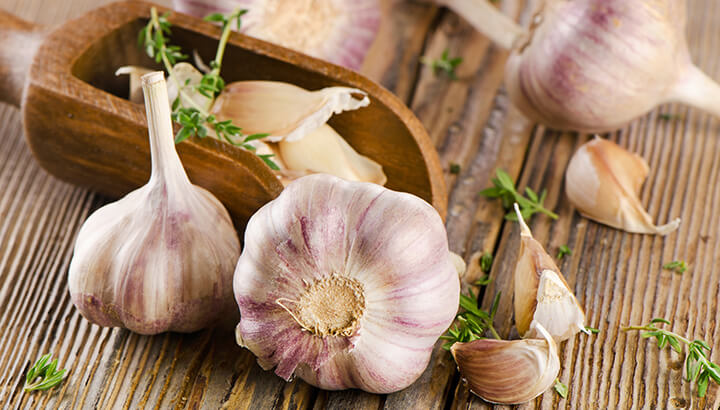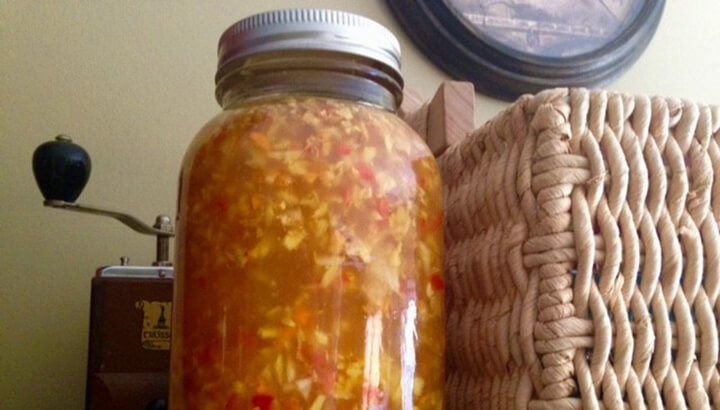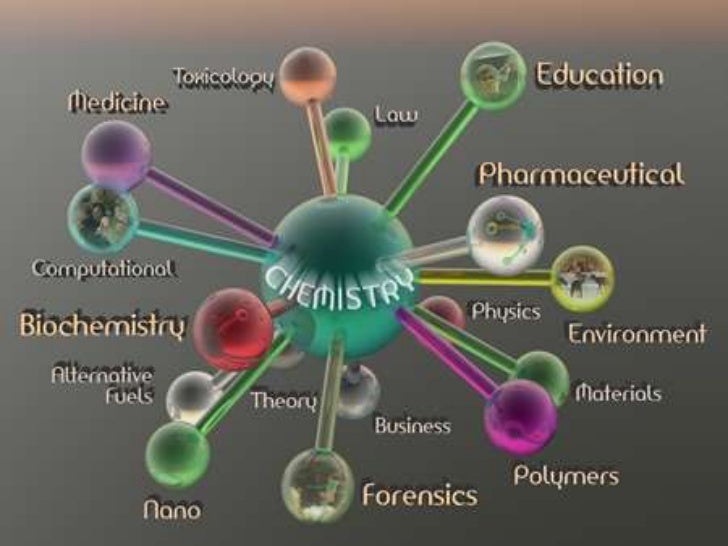
Chemistry is a branch of science, which deals with the study of the composition, structure, properties, reactions, and behavior of substances. Hence, chemistry is termed as the central science. It is the essence of our everyday lives and occurs in the food we eat, the air we breathe, the water we drink, everything is a result of chemical processes.
In fact, emotions like love and hatred are also driven by chemistry. For a better understanding of the chemistry that is virtually everywhere around us, we have provided day-to-day examples in two sections. Firstly, examples of chemistry within our body and secondly, examples of chemistry that exist outside our body or occur around us.
Chemistry Within Us
Chemistry plays a vital role in our survival, and life without chemicals can’t even be imagined. They participate in the primary functions of the body, control our emotions, oversee the metabolic processes and keep diseases at bay. The oxygen that we breathe, the essential nutrients that we require, the genetic make-up of our body – the DNA and RNA – are all made up of different elements and compounds. Let us take a look at few such instances that involve chemistry, and are an integral part of our existence.
Composition of the Human Body
Roughly 96% of our body mass is made up of just 4 elements:- Oxygen, Carbon, Hydrogen and Nitrogen. The remaining 4% consists of around 60 elements that include sodium, potassium, calcium, zinc, and the list goes on.
The elements that are required in larger amounts are called macro-nutrients and the others that are needed in minute quantities, usually in parts per million or less, are called micro-nutrients. Chemically, the human body is made up of water and organic compounds- carbohydrates, proteins, lipids, and nucleic acids.
Metabolism
The organic processes taking place in the human body are termed as metabolism, which involves huge number of chemical reactions. The enzymes that are secreted by different organs act as biocatalysts that speed up the rate of these reactions, whereas the hormones regulate their occurrence, time, and speed.
Our well-being, smooth functioning and normal health depends on these metabolic processes. The coordination and simultaneous occurrences of these life processes in an orderly manner is the reason we are fit, healthy, and alive.
Respiration
Breathing is the exchange of gases between an organism and its environment. Respiration is a chemical process, which is a reaction between glucose or sugars with oxygen, that release energy. It is the process in which inhalation of oxygen from the air causes inflation of the lungs, and then deflation occurs by exhaling carbon dioxide into the environment.
The reaction that takes place during breathing is :-
C6H12O6 + 6O2 ➜ 6CO2 + 6H2O + Energy
Composition of Water
Water is the elixir of life on Earth. Hydrogen – a highly-combustible gas and Oxygen – a gas without which combustion is impossible, form a covalent bond with each other to create the most effective fire extinguisher, which is water. The chemical formula of water is H2O.
Yes! We drink a chemical everyday. Water is important for all the metabolic processes that occur inside our body. As Leonardo da Vinci stated “Water is the driving force of all nature.”
Feeling Hungry
When you feel hungry the hormone Ghrelin is secreted by the stomach that triggers hunger. It stimulates the release of the growth hormone. It plays a role in the release of Insulin and protection of the cardiovascular organs. So, the next time your stomach growls grab a bite because if you fast or skip meals, more Ghrelin is produced thus increasing your craving for food.
Digestion
Gastric acid is composed of hydrochloric acid (HCl) and large quantities of potassium chloride(KCl) and sodium chloride(NaCl) that is secreted by the parietal cells lining the stomach.
This gastric acid helps convert pepsinogen to pepsin which is responsible for the denaturing of the proteins in the stomach. It also kills the micro-organisms in the food before they can make you sick. The HCl neutralizes the acid present in the foods you eat thereby maintaining your body’s acidic or alkaline levels to keep you healthy.
Tears and Crying
Sometimes, crying is a natural reflex. Studies have shown that emotional tears contain more manganese, an element that affects temperament and more prolactin. Prolactin is a hormone that regulates milk production. This elimination of manganese and prolactin is thought to ease out tension building up in the body and you feel energized and rejuvenated. So, the next time you feel low and need to vent your emotions, don’t hold back. Just cry! It will help you feel better.
Chemistry of LOVE
We fall in love or are attracted to someone and have a feeling of belonging due to an increase in the secretion of -Phenylethylamine (PEA, or the “love chemical”) and the hormones testosterone and estrogen which promote mating.
When we fall in love, our brain releases dopamine, norepinephrine and pheromones consistently, which evoke the pleasure center in the brain leading to side effects such as increased heart rate, insomnia, an intense feeling of excitement, elation, and focused attention.
Coffee and Sleep
Coffee keeps you awake due to the presence of caffeine in it. This caffeine increases dopamine levels in our bodies that stimulates the ‘pleasure areas’ in our brain making us feel good. It increases the adrenaline secretion in the body and speeds up activity in the brain that keeps us awake.
Body Odor
Perspiration is a way in which the body cools itself. Body odor mainly originates from the Apocrine glands, which are found in the armpits, ears, breasts, the genitals, and hair follicles that become active at the onset of puberty. The sweat that these glands release is slight yellow in color due to the presence of fatty acids and proteins in it. The bacteria that thrive on our skin break down the secretions of the Apocrine glands and create smelly odors.
These are some of the examples of chemistry inside our body. Let’s look at some examples of chemistry in day-to-day life that take place around us.
Chemistry Around Us
Chemical reactions influence the stuff around us, and there are numerous instances where chemicals and chemistry helps us live a better life. The cooking of food, the clothes we wear, fertilizers that we use for crops, cement used for building our houses, the power plants that generate electricity, and many other processes depend on chemistry. The human dependence on this natural science is increasing and to understand this, here are a few examples that highlight the importance of chemistry around us.
Photosynthesis
Photosynthesis involves energy transformation and is a chemical process wherein plants, algae, and some bacteria produce their own food. It is the synthesis of glucose using carbon dioxide and water in presence of sunlight trapped by chlorophyll present in the leaves. The reaction which occurs is depicted as:
6 CO2 + 6 H2O + Light Energy ➜ C6H12O6 + 6 O2
Photosynthesis is the reverse process of respiration. They both are inter-dependent. We get an uninterrupted supply of oxygen, and plants get the carbon dioxide they need. Thus, photosynthesis plays a significant role in our day-to-day life.
Color of Meat
There are two types of meat: red and white. Red meat contains a highly pigmented protein called myoglobin that stores oxygen in the muscle cells. More the myoglobin in the cells, the redder is the meat. However, as meat is heated, the proteins break down and shrink in size.
When the interior of the meat reaches 170° F, hemichrome (a tan colored compound) levels rise, and the myoglobin becomes metmyoglobin, which gives well-done meat its brown-gray shade. White meat contains glycogen, which has a translucent “glassy” quality when it is raw. When it’s cooked, the proteins recombine, or coagulate, and the meat becomes opaque and whitish.
Apples Turning Brown
Apples contain an enzyme called polyphenol oxidase (PPO), also known as tyrosinase. Cutting an apple exposes its cells to the atmospheric oxygen and oxidizes the phenolic compounds present in apples. This is called the enzymatic browning that turns a cut apple brown. In addition to apples, enzymatic browning is also evident in bananas, pears, avocados and even potatoes.
Crying and Onions
When you cut an onion you break the cells that form the layers in an onion, thus releasing an enzyme Alliinase that reacts with a sulfur-containing compound known as ‘prensco’, which is also released while cutting. This reaction results in the formation of 1-propenyl sulfenic acid.
1-propenyl sulfenic acid is further converted to Propanethiol S-oxide, a volatile sulfur compound, by the enzyme LF-synthase (meaning Lachrymatory Factor synthesizing enzyme). This gas, known as the Lachrymatory factor (crying factor), reacts with the water in our eyes to form sulfuric acid causing a burning sensation in your eyes and indicating the tear gland to secrete tears.
Stain Removers
Soap is formed by the reaction between an alkali and a fatty acid. This produces a molecule with one hydrophilic (water-loving) and one lipophilic (fat-loving) ends. The lipophilic ends stick to oil, grease, or dirt. These get engulfed in the soap and are washed away with a fresh stream of water, leaving a clean surface behind.
This is just a physical reaction that takes place. Soap and stain removers act as emulsifiers which allow oil and water to mix and so the oily mixtures and difficult stains on body and clothes can be removed after application of soap, stain removers, and water.
Ripening of Fruits
A simple hydrocarbon gas ethylene switches on the necessary genes that stimulate the secretion of the ripening enzymes which catalyze reactions to change the properties of the fruit. Ethylene channelizes the action of several other chemicals called hydrolase, amylase, kinase, and pectinase. These enzymes convert starch to sugar, alter the cell walls to make them softer, neutralize acids and cause the fruit to emit an aroma.
Fermentation
Fermentation is the conversion of complex substances to simpler ones under anaerobic conditions. The specific product from fermentation is driven by the type of micro-organisms acting on the substance in which the fermentation occurs. The products of fermentation are alcohols or acids and the release of carbon dioxide.
For example, wine produced from fruit juice is an alcohol as a result of fermentation by yeast, whereas beer is the result of yeast fermentation of grain. Antibiotics are obtained through fermentation by molds and some bacteria. Yogurt, cheese, and vinegar are products of bacterial fermentation. Leavened bread is obtained by yeast fermentation.
Sunscreens
Sunscreens are a combination of organic and inorganic compounds. Inorganic chemicals, like titanium dioxide or zinc oxide, form a physical barrier that reflects or scatters UV waves. Organic components like octyl methoxycinnamate (OMC) or oxybenzone absorb UV rays and release their energy as heat. This protects our skin from sunburns and detrimental effects like cancer.
Nail Paint Removers
Nail paint consists of three types of ingredients – organic solvents and drying agents, thickeners and hardening agents, and coloring agents. The remover is actually an organic solvent that is used as an ingredient in nail paint which may be acetone or ethyl acetate.
So when you apply the remover you are just bringing it back to its original state. The solvent molecules get in between the chains of polymers and separate them, making it easy to wipe it off with a ball of cotton.
Static Shocks
All materials are made up of electrical charges in the atoms of the material. There are equal quantities of electrons (negative charges) and protons (positive charges) that try to balance each other in the universe. Friction between two materials causes these charges to redistribute. The electrons from one atom are transferred to the other.
As we know, like charges repel each other and unlike charges attract each other. Whenever you touch anything that is a good conductor of electricity, the transfer of the extra electrons that have accumulated takes place, and it gives you the static shock. For example, generally in winters, you get a shock when you get out of the car or when you touch the door knob or filing cabinet.
Your body itself is a huge chemical factory wherein one or the other chemical reaction takes place every moment. Most people detest chemistry because of long reactions and difficult chemical names that we see in our books. However, taking a practical approach to understanding this science, that we come across in our everyday life, will help you appreciate it even more.
